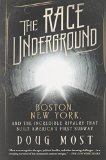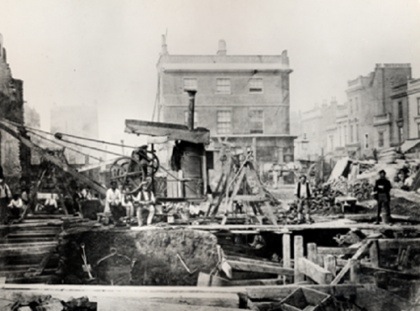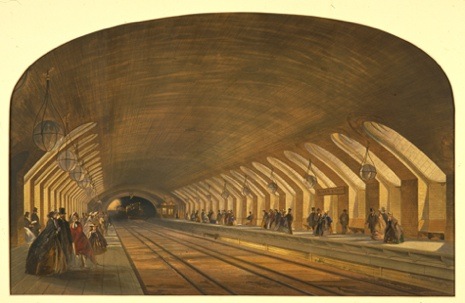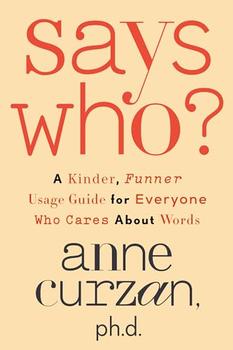Summary | Excerpt | Reviews | Beyond the Book | Read-Alikes | Genres & Themes | Author Bio
Boston, New York, and the Incredible Rivalry That Built America's First Subway
by Doug Most

Critics' Opinion:
Readers' Opinion:
First Published:
Feb 2014, 352 pages
Paperback:
Feb 2015, 432 pages
 Book Reviewed by:
Book Reviewed by:
BookBrowse First Impression Reviewers
Buy This Book
This article relates to The Race Underground
While Boston and New York might have been competing stateside to launch the first subway, across the Atlantic, London was already way ahead in getting its underground tube rolling.
In the mid-nineteenth century, congestion was getting to be an increasing problem in the city as the only way to travel around was by buses and cabs, not quite the mass transit system that was really needed.
 The solution was a sub-surface system that would alleviate congestion by moving some of it below the ground. The initial method used to dig the tunnel was called "cut and cover;" in essence, a trench was dug and then covered over with materials that supported whatever passed over it. These "cut and cover" tunnels were only about 60 foot deep and proved extremely disruptive to the city.
The solution was a sub-surface system that would alleviate congestion by moving some of it below the ground. The initial method used to dig the tunnel was called "cut and cover;" in essence, a trench was dug and then covered over with materials that supported whatever passed over it. These "cut and cover" tunnels were only about 60 foot deep and proved extremely disruptive to the city.
In 1863, London's Metropolitan Railway pioneered underground transport by setting up a functioning line between Paddington and Farringdon stations via Kings Cross using steam cars borrowed from the Great Western Railway.
 Frank Julian Sprague, from Milford, Connecticut, was among the engineers who were revolutionary in designing the American subways. Sprague, employed by a new company called Automatic Telegraph, traveled to London to learn from its successes (and failures) in mass transit. In 1883, when Sprague returned to America, London was already 20 years ahead and no other city had replicated its subway. For one thing, while the London model worked, it had its own set of problems. It used a steam-powered engine to work a machine called a dynamo that converted the mechanical energy from the steam power to electrical energy. This electric current was then routed through a rail to the railway cars. The cars then used another motor to convert this current back to mechanical energy so as to physically turn the wheels and push the cars ahead. This complicated technology was not easy to reproduce. Pollution was another problem. As Doug Most writes in The Race Underground, "The giant steam locomotives also scared cities away. They pumped out black smoke and pungent gas and rained down hot steam and showers of soot and sparks into the enclosed tunnels, making the experience of riding the Underground filthy, dangerous, and unpleasant." So a solution other than steam from coal was needed.
Frank Julian Sprague, from Milford, Connecticut, was among the engineers who were revolutionary in designing the American subways. Sprague, employed by a new company called Automatic Telegraph, traveled to London to learn from its successes (and failures) in mass transit. In 1883, when Sprague returned to America, London was already 20 years ahead and no other city had replicated its subway. For one thing, while the London model worked, it had its own set of problems. It used a steam-powered engine to work a machine called a dynamo that converted the mechanical energy from the steam power to electrical energy. This electric current was then routed through a rail to the railway cars. The cars then used another motor to convert this current back to mechanical energy so as to physically turn the wheels and push the cars ahead. This complicated technology was not easy to reproduce. Pollution was another problem. As Doug Most writes in The Race Underground, "The giant steam locomotives also scared cities away. They pumped out black smoke and pungent gas and rained down hot steam and showers of soot and sparks into the enclosed tunnels, making the experience of riding the Underground filthy, dangerous, and unpleasant." So a solution other than steam from coal was needed.
Using technology adopted from Germany and the United States, trains powered by electric current started out small in London with DC current provided by a third rail powering the locomotives that transported the carriages. In 1890 the Prince of Wales formally inaugurated London's electric car system my turning a switch that would power the train. Royal and special dignitaries took the first ride that was just a three-mile stretch. "Instead of being powered by steam or by cable as was first intended, its cars moved by electricity," Most writes. "A steel channel was run alongside the rails and iron "scoops" fixed on the bottom of the locomotives picked up the current. This was the world's first electrically powered subway."
The London Subway (and in fact, all others) owe a debt of gratitude to a parallel solution developed to solve road vehicular traffic problems. In 1824, the Thames Tunnel Company was created. Its mission, writes Doug Most, was "to build the world's first tunnel for vehicular traffic and to do it directly beneath the Thames River." By this time traffic in this area of south-east London had become a nightmare with long holdups on either side of the Thames as thousands of people looked to get across. While another bridge was an obvious solution, engineers Marc Isambard Brunel and his son proposed cutting through rock underneath the Thames River to build a tunnel. It was finally built in 1843 and the machine used, the Greathead Tunneling Shield, would become the necessary tool for cutting through hard rock. Unlike "cut and cover" tunnel building, the Shield provided a way to go truly deep down (as much as 220 feet) thus causing much less disruption to life above ground.
As for London's electric subway, at its inaugural festivities Sir John Fowler, a pioneering British civil engineer, asked: "Can this electric railway be looked upon as a guide for the future?" Today, we all know the answer to that one.
 These days, the familiar "rondel" (the bar and circle) logo greets approximately 3.4 million passengers of the London Underground every day as they are warned to "please mind the gap between the train and the platform."
These days, the familiar "rondel" (the bar and circle) logo greets approximately 3.4 million passengers of the London Underground every day as they are warned to "please mind the gap between the train and the platform."
In 2013, London celebrated the 150th anniversary of the Underground. The Telegraph has fantastic archival pictures in its article "The history of the Tube in pictures: 150 years of London Underground."
For a look at the pneumatic tube as an early method of transportation, read the Beyond the Book for The Death-Defying Pepper Roux.
Picture of logo from Wikipedia.org
Lithograph of Baker Street Station on Metropolitan Railway and picture of Cut and cover construction at Praed Street Paddington, from London Transport Museum
Filed under People, Eras & Events
![]() This "beyond the book article" relates to The Race Underground. It originally ran in February 2014 and has been updated for the
February 2015 paperback edition.
Go to magazine.
This "beyond the book article" relates to The Race Underground. It originally ran in February 2014 and has been updated for the
February 2015 paperback edition.
Go to magazine.




A library, to modify the famous metaphor of Socrates, should be the delivery room for the birth of ideas--a place ...
Click Here to find out who said this, as well as discovering other famous literary quotes!
Your guide toexceptional books
BookBrowse seeks out and recommends the best in contemporary fiction and nonfiction—books that not only engage and entertain but also deepen our understanding of ourselves and the world around us.